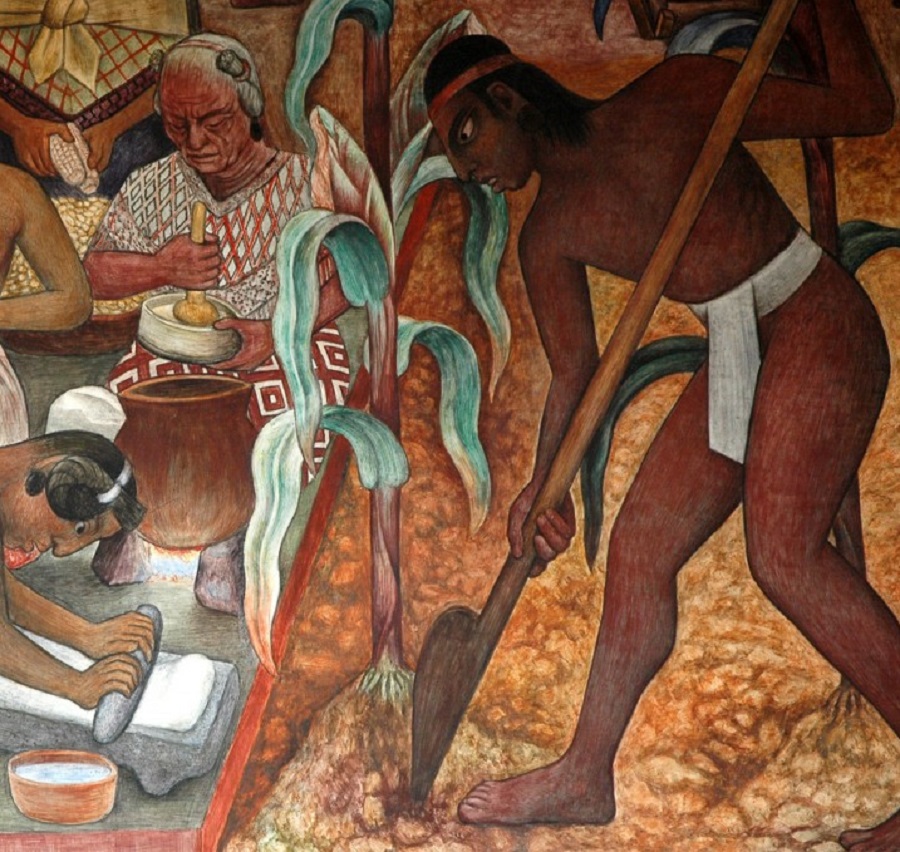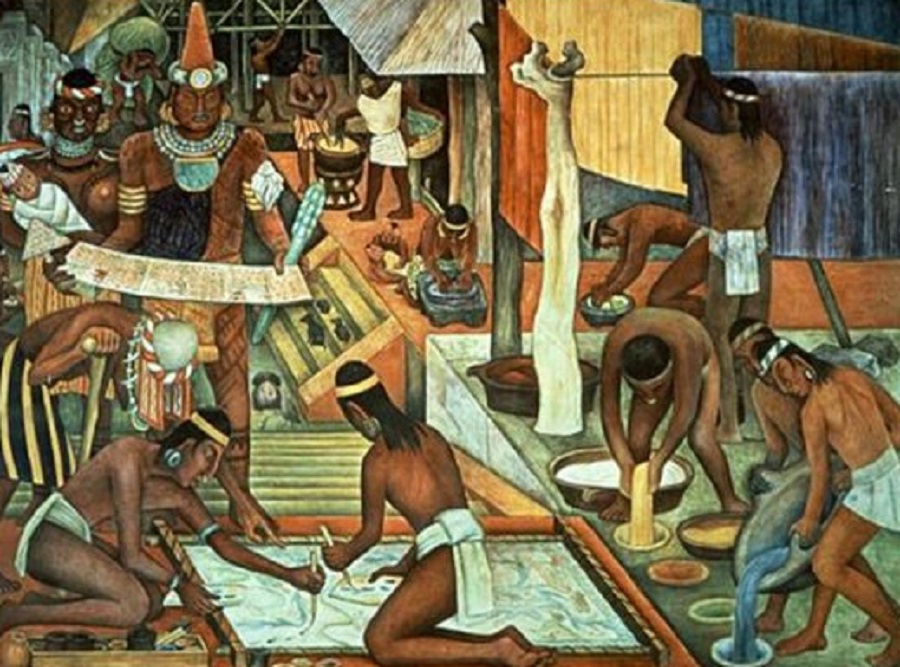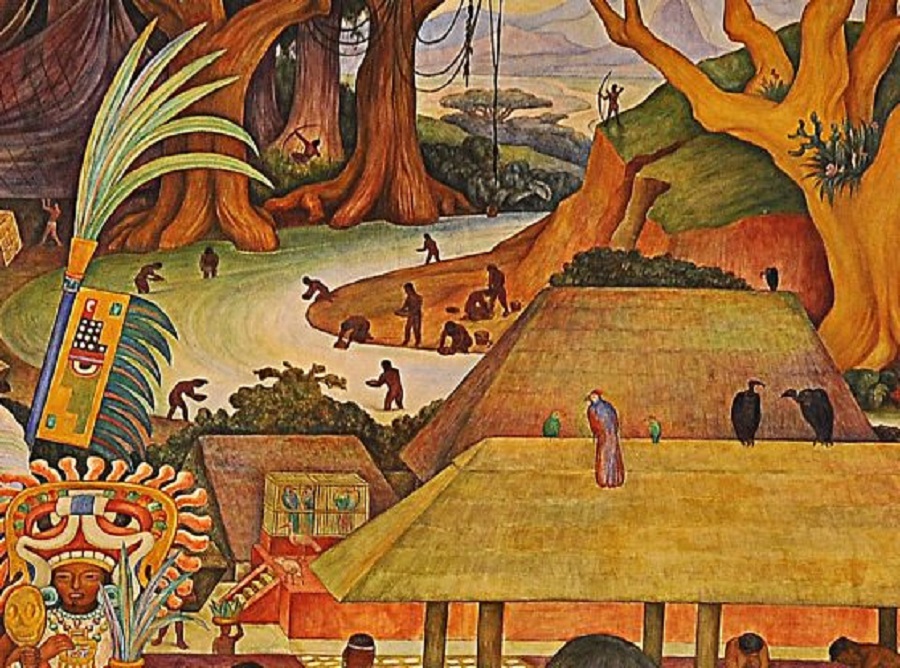The political-social distribution of the Zapotecs, was shown under a pyramidal composition headed by the leader and finally the lower social class, which was characterized by having a voice of monarchical-religious mandate. Through this article, we invite you to know the Political Organization of the Zapotecs.

Political Organization of the Zapotecs
The Zapotec peoples were identified by a martial advance that allowed them to spread their culture, establishing a religious monarchy. The most transcendental capitals of this culture lay in Monte Albán, Yagul, Teotitlán and Zaachila, which they managed to subjugate through commercial ties with neighboring Olmecs, and through military conquest and capture of rival rulers of neighboring peoples.
Thus, as they were established under a dual system, which represented their way of life, this in that sense directly influenced their political organization. In this way, in this culture a system of government was established which was exercised mainly by the nobility, placing as its maximum figure a Gocquitao or King, and the assistance of the priests.
Usually, the position of the maximum figure had to be inherited by the king in service, that is, the king was the one who had the power to appoint his successor, as long as it came from a woman who was the daughter of a chief or Warrior; this somehow allowed, that there was a participation of the entire Zapotec society in terms of its political system.
The Zapotecs, in addition to having their king, in turn had a group of priests who were attributed equally important functions in addition to serving as assistance to the king, regarding the affairs of the kingdom. This, in some sense, gave it a theocratic character; Likewise, it is important to note that only this group should be made up of native individuals, in this case Zapotecs.
Reality of the Political Organization of the Zapotecs
This duality that appears in terms of governability, makes us imagine that there were two types of visions for the management and administration of the kingdom; however, in this culture the theocratic model perspective and composition prevailed. This is abundantly evident after reviewing the standards and rules presented below.
- The priests were the ones who, in a certain way, ensured the protection and validation of the king and they did this under military accompaniment, that is, individuals belonging to the upper class represented in the social and political organization of the Zapotecs participated in this support. .
- The theocratic model was somehow enveloped by a mystical and divine character, they therefore considered that their leading figure revolved around a God, who must necessarily be an object of worship.
- The Zapotecs considered that individuals belonging to a clan of priests were linked to the patron god of this culture, so they were required to maintain a state of celibacy. Additionally, these individuals held positions as superior judges of that kingdom, these generally remained confined and protected within the palace.
- The links of these representatives with the natives of this society were managed with religious hierarchical rules, not attributed by law, but based on notions of reputation to obtain these hierarchical positions in the Zapotec political system.
Social organization
From its origin, the social organization of the Zapotecs is formed through a set of rules, which are founded and framed in a model of religious hierarchy, based on theocracy.
Thus, as this was divided into two groups which can be established an ruling class and a subjugated, it is generally defined by the type of function that each individual exercised in the community.
- First group: It was made up of priests, chiefs, warriors, high officials and merchants.
- Second group: was made up mostly of peasants and artisans.
Additionally, there were other aspects that the Zapotecs considered socially very significant for their society, such as those that we will present below:
Family
The family symbolized the basic and social element of the Zapotecs, where each individual, according to their gender, was responsible for carrying out a certain activity. They are detailed below:
- In the case of men, they exercised activities such as hunting, fishing, agriculture, commerce, pottery and in addition to training as warriors.
- In women, it was more common to see them work in activities that would imply harvesting, cooking, maintaining their homes, as well as their participation in artisanal activities such as the elaboration of textiles, basketry, and others; on some occasions, they also participated in agricultural work.
It is important to note that the Zapotecs had a preference for having considerably large families, and these, in turn, tried to remain fairly close together.
Marriage
The Zapotecs carried out inbreeding, therefore it was very common to visualize in this civilization weddings between members with the same family lineage, they could also marry individuals from other families.
Patriarchy
For the Zapotec civilization, the environment in which they developed was structured with patriarchal characteristics, men had a very important role in this society, so it was common to see that everything was wrapped around this representation.
Equity shares
The Zapotecs had rules regarding the management of the patrimony, usually when there was a case of death of the parents of a family, the patrimony of these was divided, granting their portion to each child; When there were children in this family, they were entitled to a more significant portion of the inheritance, since they lived with their firstborn at the time of this event.
Likewise, the considerable difference between the fractions to receive by gender was seen, since it was usually the man who received more assets than in relation to the female offspring. There were even cases where parents granted the right to their assets when they found it impossible to work and their children were older with a family already formed.
Religion
During the pre-Hispanic period, the Zapotec civilization believed that the cosmos was enveloped in four essences, each composed of a certain shade of color and with certain properties, one of a specific color and with certain mystical and supernatural properties. These, in turn, were associated with their deities, granting them natural elements such as: the sun, the rain, the tide, among others. Likewise, they considered time as cyclical and non-linear.
In the present the Zapotecs, maintain in part their ancient beliefs syncretizing it with Catholic beliefs, among the current beliefs the following are practiced:
- devotion to Jesus Christ.
- Recognition and faith in guardian animals, titled shades. They have the conception that when a person is born, he obtains the protection of a tone that can be represented by any type of animal; additionally, it was believed that he provided qualities to his human, whether in strength, vigor, wisdom, among others.
- The presence of sorcerers and demons, which according to their story these usually present themselves in human form, either male or female.
- Just as there are priests of the Catholic Church, there are still individuals who have practiced the Zapotec priesthood, which is why they can be seen directing rituals and ceremonies of this culture. To stand out, these priests were also given the name of magicians, who are required to lead important ceremonies such as: marriages, funerals, baptisms, blessing of the home in a move, spiritual cleansing, among others.
Ceremonies
As for their ceremonial rites, the Zapotecs were characterized by condescending to the gods by giving gifts, offerings that included blood rites and offerings of humans and animals. In the case of humans, they used to choose individuals from enemy tribes and in this exchange they asked the gods for prosperity in their crops, good weather, among other requests.
Currently, these ceremonies are aligned to events such as those named above, such as: marriage, life, baptism, funeral, among others. Two of the most significant cults are the one that takes place on All Saints' Day, and the day of the patron saint of each society.
If you found this article of the Political Organization of the Zapotecs interesting, we invite you to enjoy these other articles:


